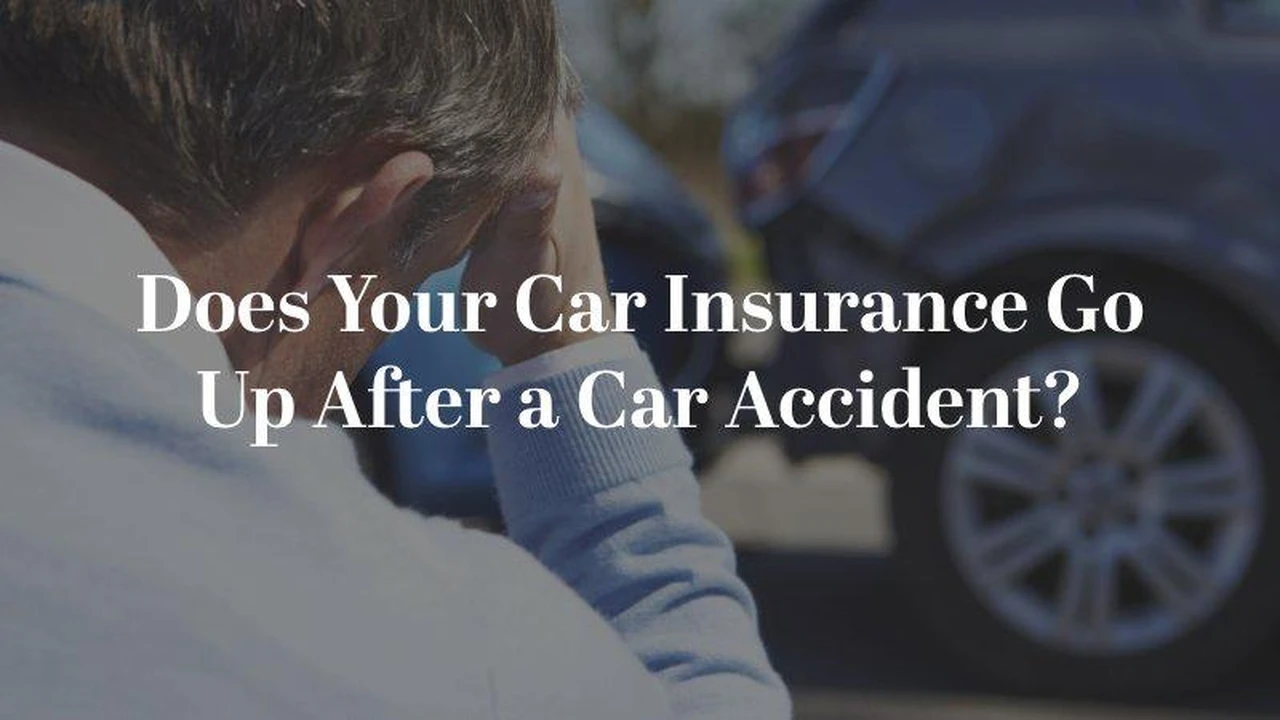How to Choose the Right Car Insurance Coverage for Your Needs

Understanding Car Insurance Basics Key Coverage Types
Okay, so you're looking to get car insurance. Smart move! But where do you even start? It can feel like navigating a maze of jargon and confusing options. Don't worry, we're here to break it down. First things first, let's talk about the core coverage types you absolutely need to know.
Liability Coverage Protecting You From Financial Risk
Liability coverage is your bread and butter. It's what protects you if you're at fault in an accident and cause damage to someone else's car or injure them. Think of it as a financial safety net. It covers their medical bills, car repair costs, and even legal fees if they decide to sue. There are two parts to liability coverage: bodily injury liability and property damage liability. Bodily injury covers injuries to others, while property damage covers damage to their vehicle or other property. The higher your liability limits, the more protection you have. Skimping on liability coverage is a huge risk, as you could be personally responsible for paying out a significant amount of money if an accident is your fault.
Collision Coverage Repairing Your Vehicle After an Accident
Collision coverage steps in to repair or replace your car if it's damaged in an accident, regardless of who's at fault. This is super helpful if you accidentally rear-end someone or get into a fender-bender. It covers the cost of repairs up to your car's actual cash value (ACV), minus your deductible. Speaking of deductibles, that's the amount you pay out-of-pocket before your insurance kicks in. A higher deductible usually means a lower premium, but you'll have to pay more if you file a claim.
Comprehensive Coverage Protection Against Non-Collision Events
Comprehensive coverage is your all-around protector against things that aren't collisions. Think of it as covering everything *else* that could happen to your car. This includes theft, vandalism, fire, hail, floods, and even hitting a deer. Like collision coverage, it covers the cost of repairs or replacement up to your car's ACV, minus your deductible. If you live in an area prone to severe weather or high crime, comprehensive coverage is definitely worth considering.
Uninsured/Underinsured Motorist Coverage Protecting Against Negligent Drivers
This coverage is a lifesaver if you're hit by a driver who doesn't have insurance or doesn't have enough insurance to cover your damages. It protects you and your passengers by covering your medical bills, lost wages, and pain and suffering. Uninsured/underinsured motorist coverage is especially important if you live in a state with a high percentage of uninsured drivers.
Factors Affecting Car Insurance Premiums Understanding Pricing
So, how do insurance companies figure out how much to charge you? It's a complex formula that takes into account a variety of factors. Here are some of the most important ones:
Driving History Past Accidents and Traffic Violations Impacting Rates
Your driving record is a huge factor. If you have a history of accidents, speeding tickets, or other traffic violations, you're going to pay more for car insurance. Insurance companies see you as a higher risk, meaning you're more likely to file a claim in the future. The more serious the violation, the bigger the impact on your premium. A DUI, for example, can significantly increase your rates.
Age and Gender Statistical Risk Assessment
Statistically, younger drivers are more likely to be involved in accidents than older drivers. That's why young drivers typically pay higher insurance premiums. Men, especially young men, also tend to pay more than women due to statistical data showing they are more prone to risky driving behaviors. However, these factors become less significant as you get older and establish a good driving record.
Vehicle Type Safety Features and Repair Costs
The type of car you drive also affects your insurance rates. Expensive cars, sports cars, and cars that are frequently stolen tend to have higher premiums. This is because they're more costly to repair or replace. Conversely, cars with advanced safety features, like automatic emergency braking and lane departure warning, may qualify for discounts.
Location Urban vs Rural Areas and Crime Rates
Where you live plays a role in your car insurance rates. If you live in a densely populated urban area with high traffic and a high crime rate, you're likely to pay more than someone who lives in a quiet rural area. This is because urban areas have a higher risk of accidents and theft.
Credit Score Financial Responsibility Indicator
In many states, insurance companies use your credit score to assess your risk. Studies have shown that people with lower credit scores are more likely to file claims. If you have a good credit score, you'll likely get a better insurance rate. However, some states have banned the use of credit scores in insurance pricing.
Finding the Right Coverage Matching Needs and Budget
Now that you understand the basics of car insurance, how do you choose the right coverage for your needs and budget? Here's a step-by-step guide:
Assessing Your Needs Evaluating Risks and Coverage Requirements
Start by assessing your individual needs. Consider your driving habits, the value of your car, where you live, and your financial situation. If you have a brand new car, you'll probably want to get collision and comprehensive coverage to protect your investment. If you have an older car that's not worth much, you might consider dropping those coverages to save money. Also, think about your risk tolerance. How much risk are you willing to take? If you're comfortable paying a higher deductible, you can lower your premium.
Comparing Quotes Shopping Around for the Best Deals
Don't just settle for the first quote you get. Shop around and compare quotes from multiple insurance companies. You can use online comparison tools or work with an independent insurance agent who can get quotes from several different companies. Make sure you're comparing apples to apples. Check that the coverage limits and deductibles are the same across all quotes.
Understanding Deductibles Balancing Costs and Out-of-Pocket Expenses
Your deductible is the amount you pay out-of-pocket before your insurance kicks in. A higher deductible means a lower premium, but you'll have to pay more if you file a claim. Choose a deductible that you're comfortable paying. If you can afford to pay a higher deductible, you can save a significant amount of money on your premium.
Reviewing Policy Details Ensuring Adequate Protection
Before you finalize your car insurance policy, carefully review all the details. Make sure you understand what's covered and what's not. Pay attention to the exclusions, which are situations that are not covered by your policy. If you have any questions, don't hesitate to ask your insurance agent.
Car Insurance Discounts Saving Money on Your Premiums
Who doesn't love a good discount? Here are some of the most common car insurance discounts you can take advantage of:
Safe Driver Discounts Rewarding Good Driving Habits
If you have a clean driving record, you're likely to qualify for a safe driver discount. This discount is awarded to drivers who have been accident-free and violation-free for a certain period of time, typically three to five years.
Good Student Discounts Incentivizing Academic Achievement
If you're a student with good grades, you may be eligible for a good student discount. This discount is offered to students who maintain a certain GPA, typically a B average or higher.
Multi-Policy Discounts Bundling Insurance Policies for Savings
If you have multiple insurance policies with the same company, such as car insurance and homeowners insurance, you may qualify for a multi-policy discount. This discount is offered to customers who bundle their insurance policies.
Vehicle Safety Feature Discounts Rewarding Safe Car Choices
If your car has advanced safety features, like anti-lock brakes, airbags, and electronic stability control, you may be eligible for a vehicle safety feature discount. These features can help prevent accidents and reduce the severity of injuries.
Low Mileage Discounts Rewarding Limited Driving
If you don't drive much, you may qualify for a low mileage discount. This discount is offered to drivers who drive fewer miles per year than average. Some insurance companies offer usage-based insurance, which tracks your driving habits and adjusts your premium accordingly.
Recommended Car Insurance Products and Usage Scenarios
Alright, let's get into some specific product recommendations. Keep in mind that the best choice for you depends on your individual circumstances, but these are some solid options to consider.
Progressive Snapshot Usage-Based Insurance for Personalized Rates
Progressive Snapshot is a usage-based insurance program that tracks your driving habits using a mobile app or a plug-in device. It monitors things like hard braking, speeding, and nighttime driving. If you're a safe driver, you can earn a significant discount on your premium. This is a great option for people who drive infrequently or who have good driving habits. The average discount is around 15%, but some drivers can save up to 30%. However, if you have poor driving habits, your rates could actually increase. Prices vary based on driving habits and location.
Allstate Drivewise Personalized Feedback and Potential Savings
Similar to Progressive Snapshot, Allstate Drivewise tracks your driving habits using a mobile app. It provides personalized feedback on your driving and offers the potential to earn rewards and discounts. Even if you don't qualify for a discount, you can still earn rewards points that can be redeemed for gift cards and other perks. This is a good option for people who want to improve their driving habits and potentially save money. Prices vary based on driving habits and location.
State Farm Drive Safe & Save Usage-Based Insurance with Flexible Options
State Farm Drive Safe & Save is another usage-based insurance program that tracks your driving habits using a mobile app. It offers flexible options for how your driving data is collected, allowing you to choose the method that works best for you. You can earn discounts based on factors like safe driving, low mileage, and avoiding hard braking and acceleration. Prices vary based on driving habits and location.
Geico Accident Forgiveness Protection Against Rate Increases
Geico offers accident forgiveness, which protects you from rate increases after your first at-fault accident. This is a valuable feature, especially if you have a clean driving record. It gives you peace of mind knowing that your rates won't skyrocket if you make a mistake. Accident forgiveness is typically offered as an add-on to your policy and may have certain eligibility requirements. Prices vary based on driving history and location.
USAA Car Insurance Exclusive Benefits for Military Members and Families
If you're a member of the military or a veteran, you're eligible for USAA car insurance. USAA offers competitive rates, excellent customer service, and a variety of benefits specifically tailored to military members and their families. These benefits include deployment discounts, vehicle storage options, and coverage for personal belongings while on deployment. USAA consistently ranks high in customer satisfaction surveys. Prices vary based on military status, driving history, and location.
Comparing Car Insurance Products Detailed Analysis
Let's break down a comparison of the products mentioned above to help you better understand their strengths and weaknesses.
Usage-Based Insurance Comparison Progressive vs Allstate vs State Farm
Progressive Snapshot, Allstate Drivewise, and State Farm Drive Safe & Save are all usage-based insurance programs, but they have some key differences. Snapshot focuses primarily on hard braking, speeding, and nighttime driving. Drivewise offers more personalized feedback and rewards points in addition to potential discounts. Drive Safe & Save provides more flexible options for data collection. The best choice for you depends on your preferences and driving habits. If you're confident in your safe driving skills, Snapshot might be the most straightforward option. If you want more detailed feedback and rewards, Drivewise could be a better fit. If you prefer more control over how your data is collected, Drive Safe & Save might be the best choice.
Accident Forgiveness Comparison Geico vs Competitors
Geico's accident forgiveness is a valuable feature, but it's not unique. Many other insurance companies also offer accident forgiveness, although the terms and conditions may vary. Some companies offer accident forgiveness as a standard feature, while others offer it as an add-on. Some companies only forgive your first accident, while others forgive multiple accidents. Be sure to compare the details of each company's accident forgiveness program before making a decision. It's also important to note that accident forgiveness typically only applies to your first at-fault accident within a certain period of time, such as three years.
Military Discounts Comparison USAA vs Other Insurers
USAA is known for its excellent service and benefits for military members and their families, but other insurance companies also offer military discounts. However, USAA's discounts are often more generous and comprehensive. In addition to discounts, USAA offers specialized coverage options and services tailored to the unique needs of military members, such as deployment discounts and vehicle storage options. If you're a member of the military, it's definitely worth getting a quote from USAA. However, it's always a good idea to compare quotes from multiple companies to ensure you're getting the best rate.
Understanding Car Insurance Costs Detailed Pricing Information
Let's talk about the nitty-gritty: how much does car insurance actually cost? It's impossible to give you an exact number without knowing your specific details, but here's a general overview of pricing and related factors.
Average Car Insurance Premiums National and Regional Variations
The average cost of car insurance in the United States is around $1,600 per year, but this can vary significantly depending on your location, driving history, and other factors. Some states have much higher average premiums than others. For example, Michigan consistently has the highest average premiums due to its no-fault insurance system, while Maine typically has the lowest average premiums. Urban areas tend to have higher premiums than rural areas due to higher traffic density and crime rates.
Factors Influencing Premiums Driving History, Vehicle Type, and Coverage Levels
As mentioned earlier, your driving history, vehicle type, and coverage levels all play a significant role in determining your car insurance premium. A clean driving record will result in lower premiums, while a history of accidents and violations will increase your rates. More expensive cars and sports cars typically have higher premiums due to higher repair and replacement costs. Higher coverage limits and lower deductibles will also increase your premium.
Strategies for Lowering Premiums Discounts, Higher Deductibles, and Coverage Adjustments
There are several strategies you can use to lower your car insurance premium. Taking advantage of discounts, such as safe driver discounts, good student discounts, and multi-policy discounts, can significantly reduce your rates. Increasing your deductible will lower your premium, but you'll have to pay more out-of-pocket if you file a claim. Adjusting your coverage levels, such as reducing your liability limits or dropping collision and comprehensive coverage on an older car, can also save you money.
:max_bytes(150000):strip_icc()/277019-baked-pork-chops-with-cream-of-mushroom-soup-DDMFS-beauty-4x3-BG-7505-5762b731cf30447d9cbbbbbf387beafa.jpg)






